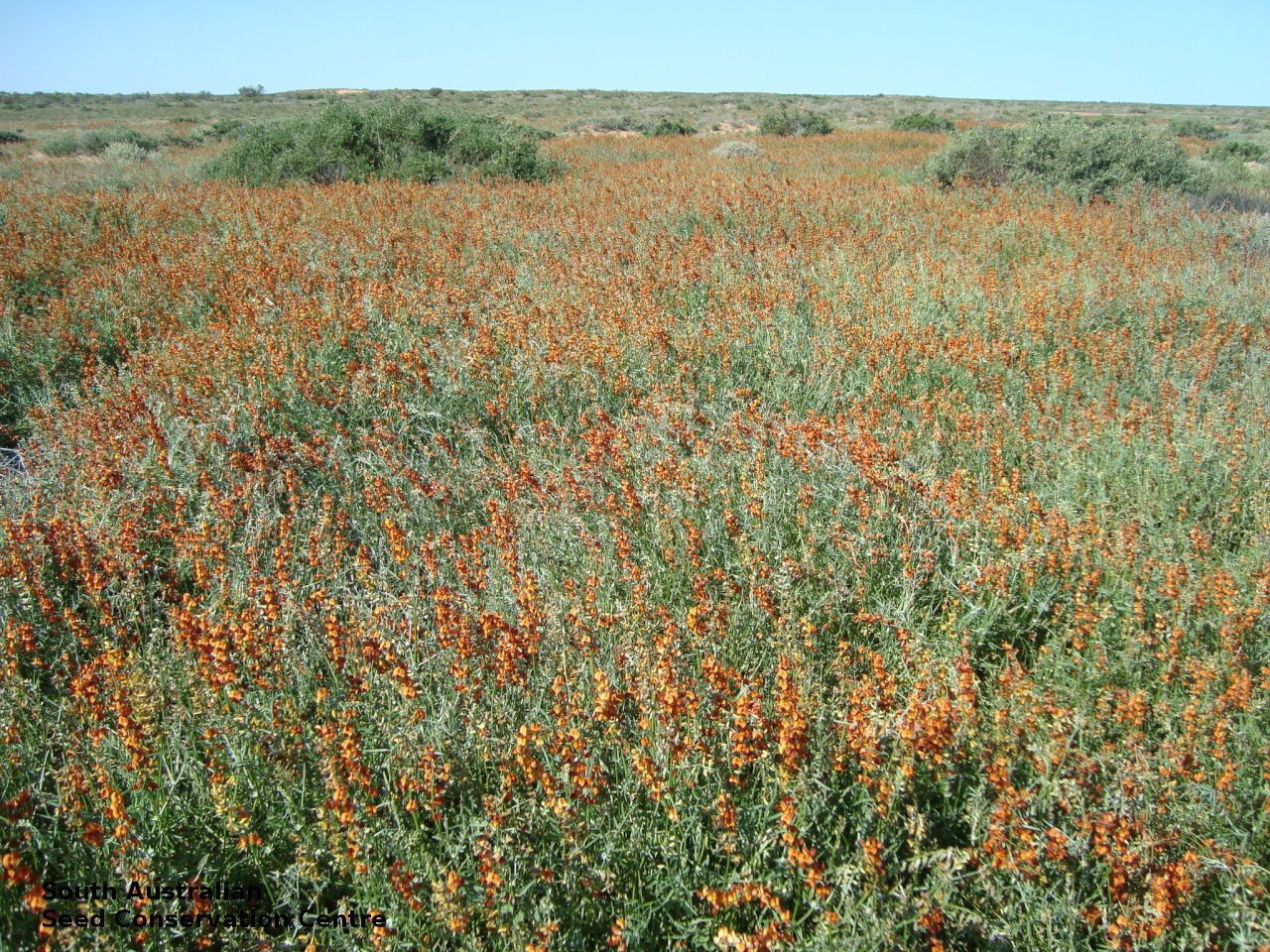
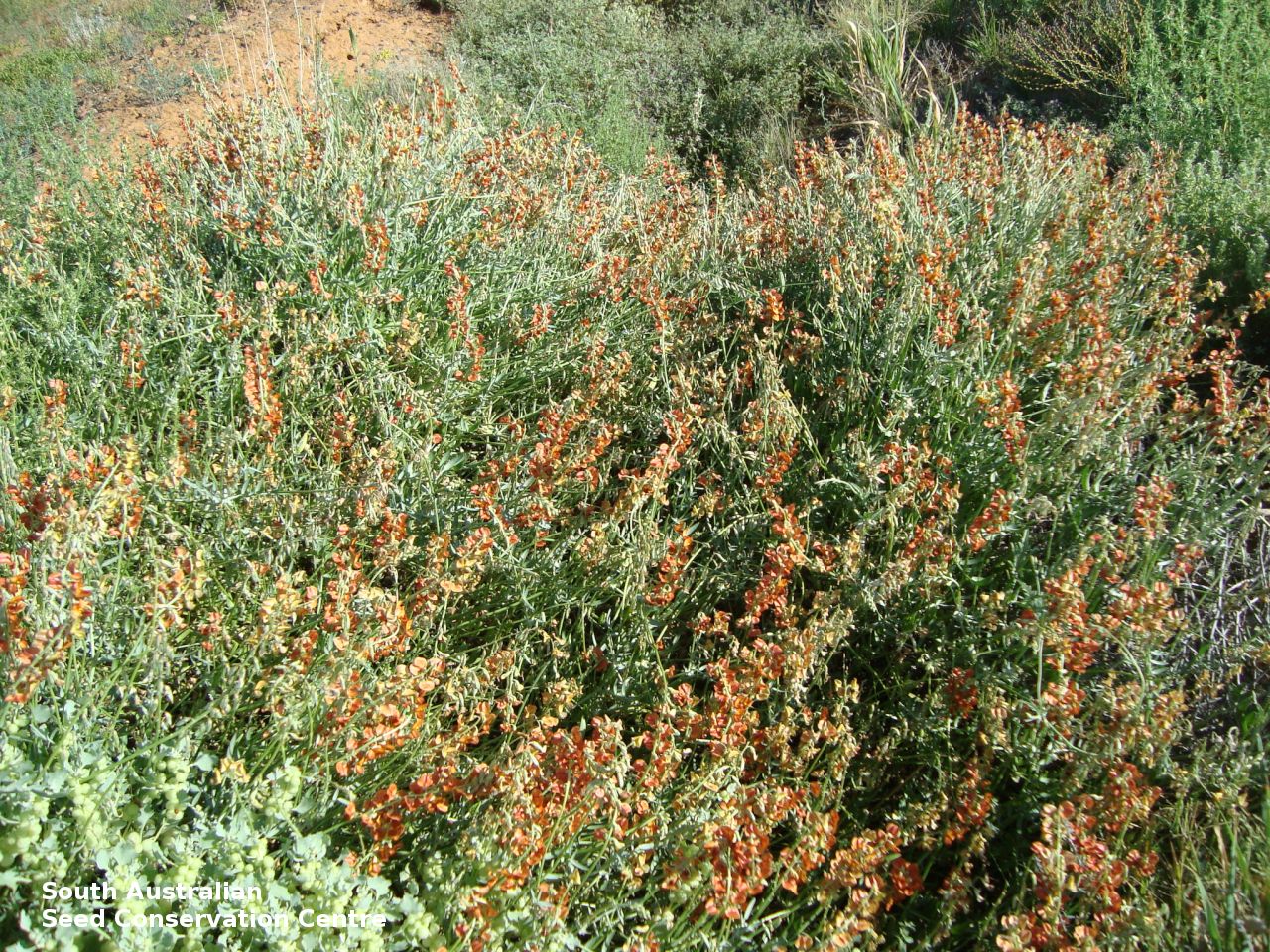
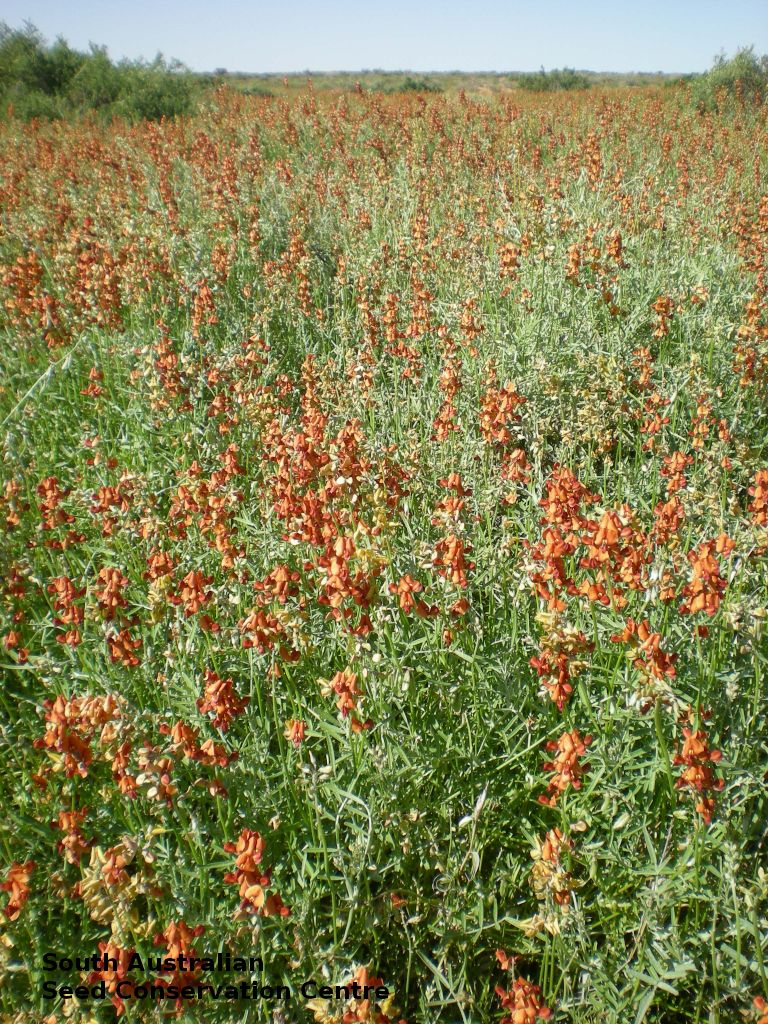
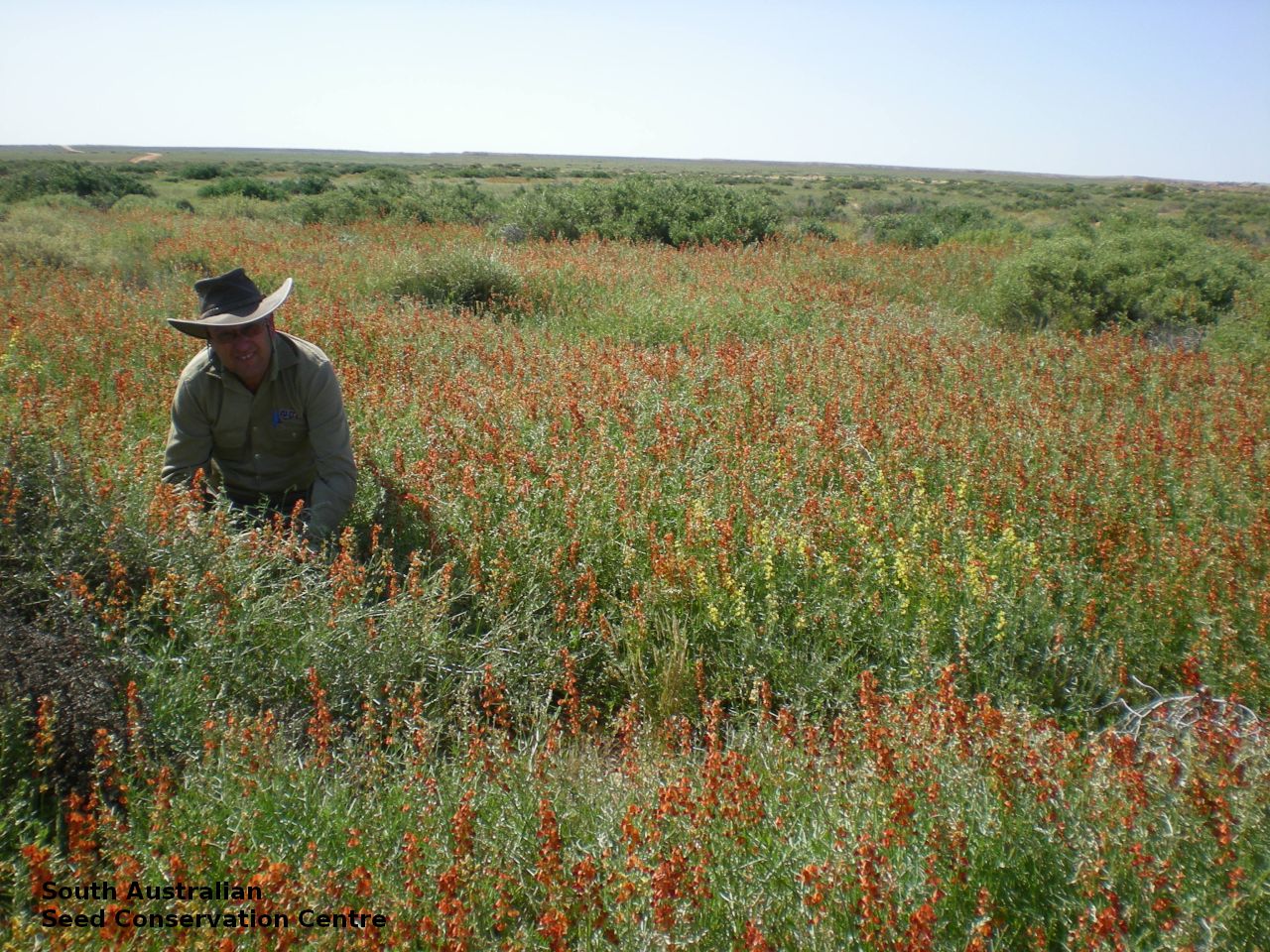
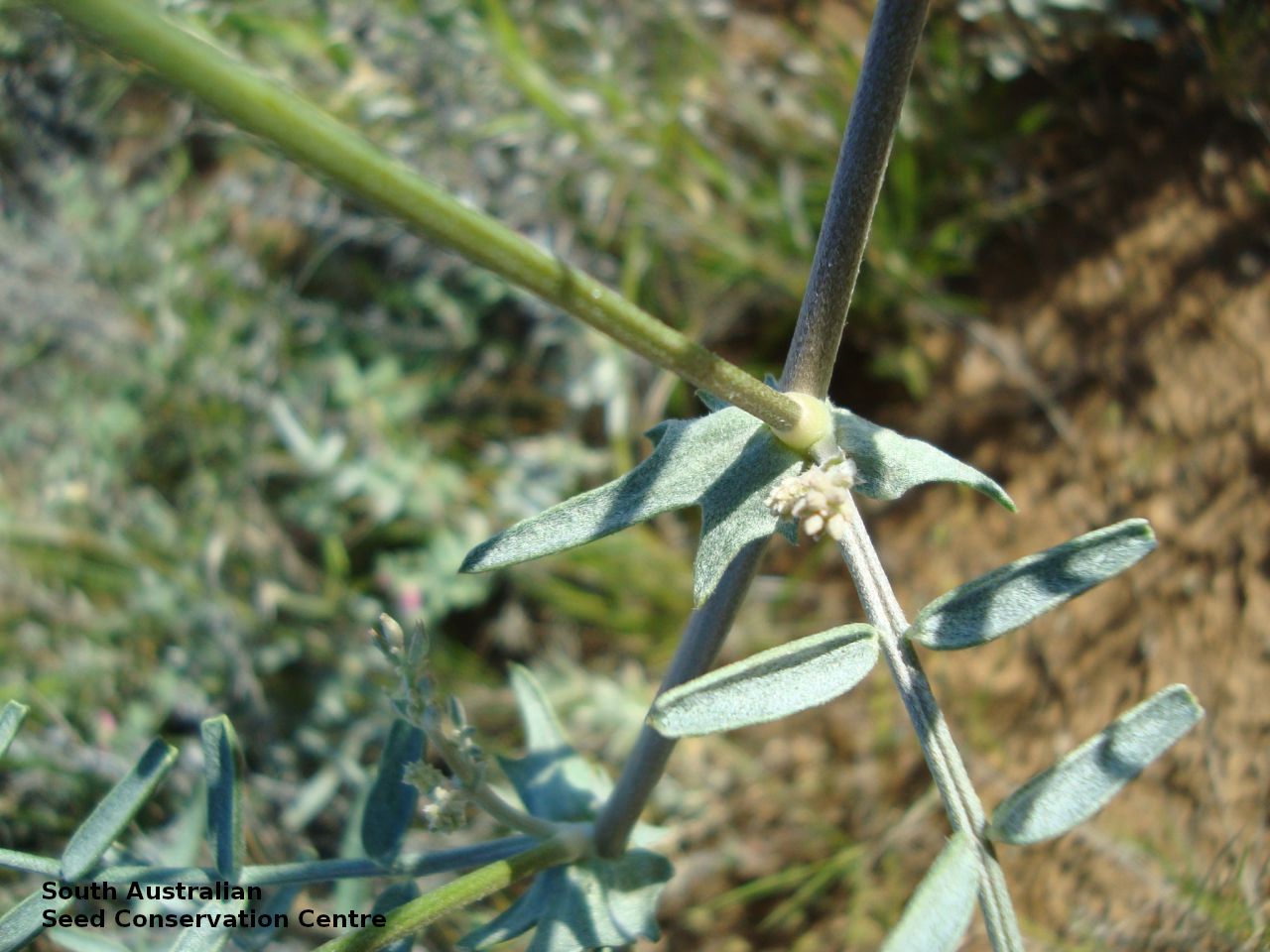
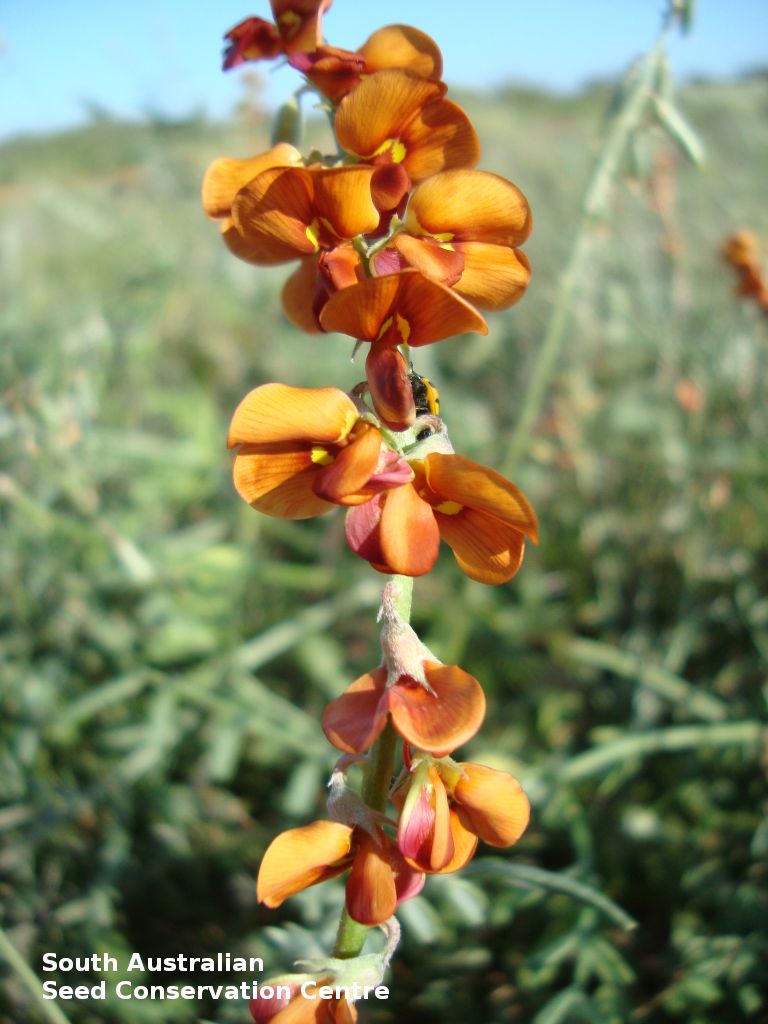
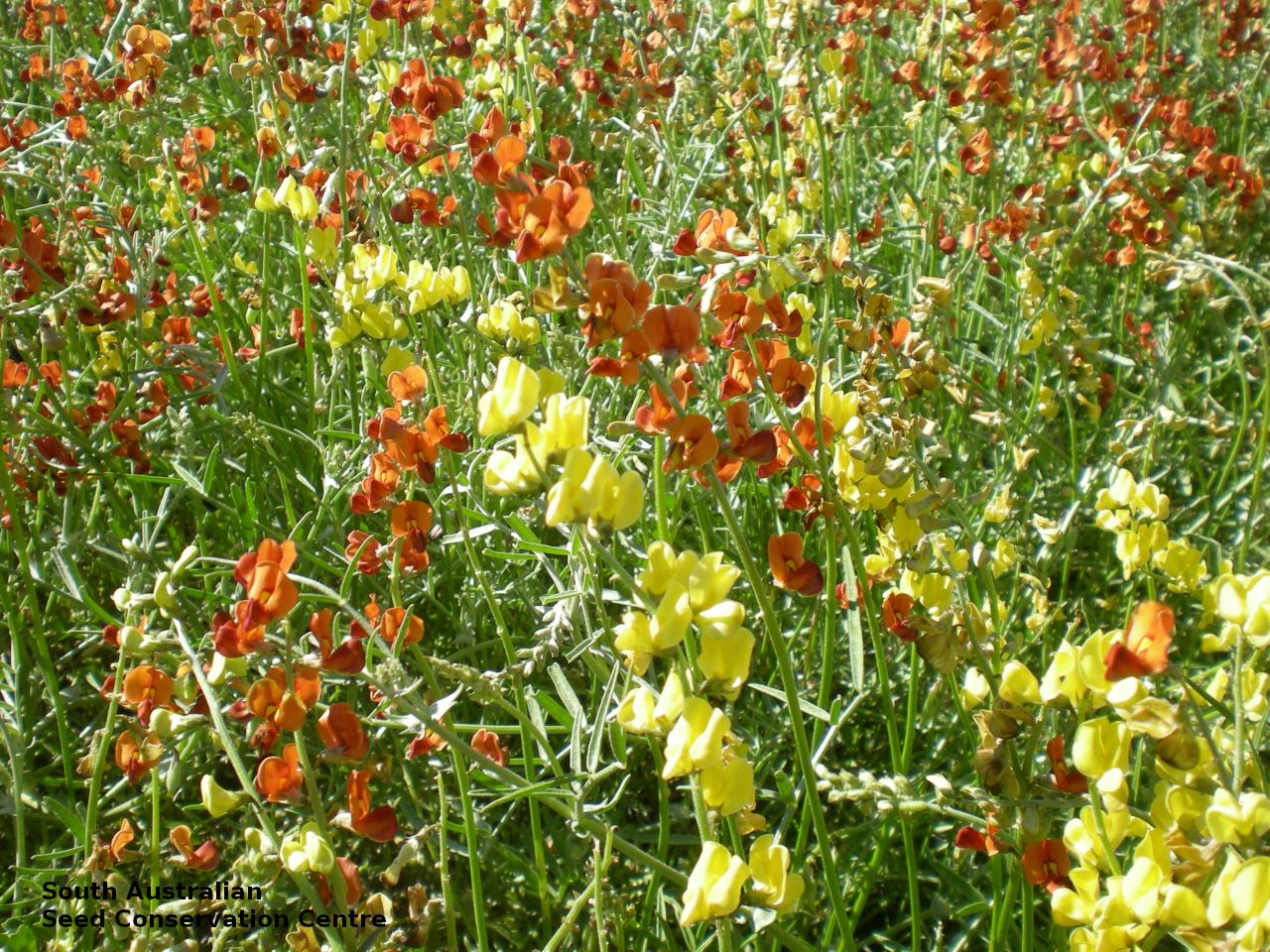
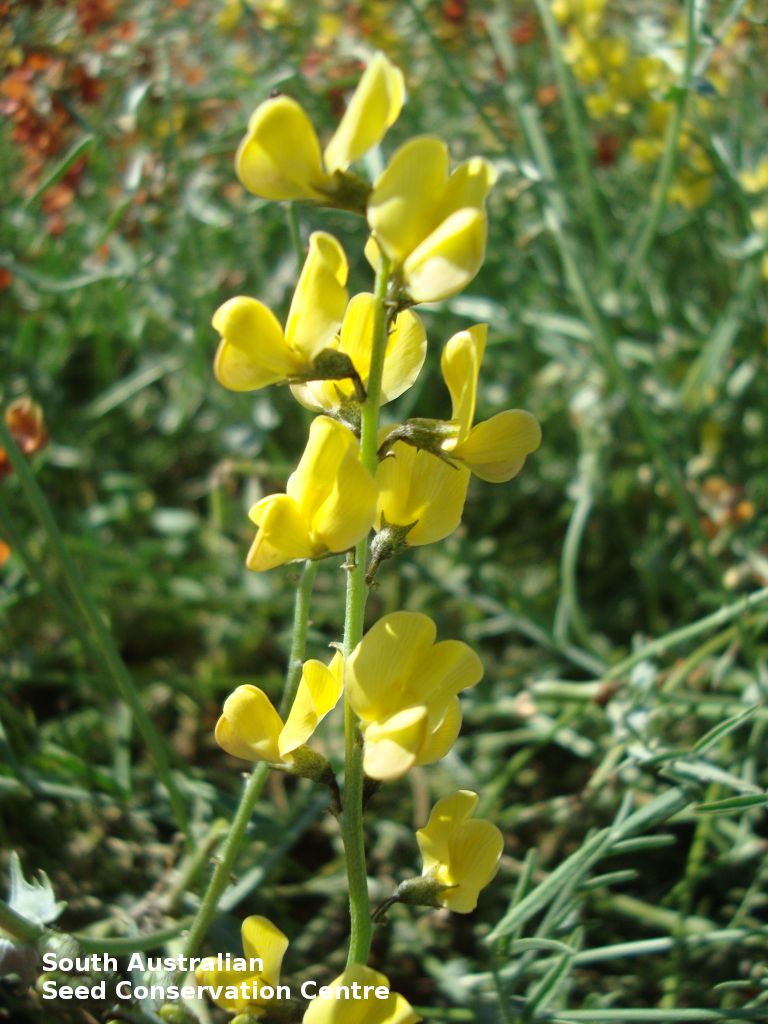
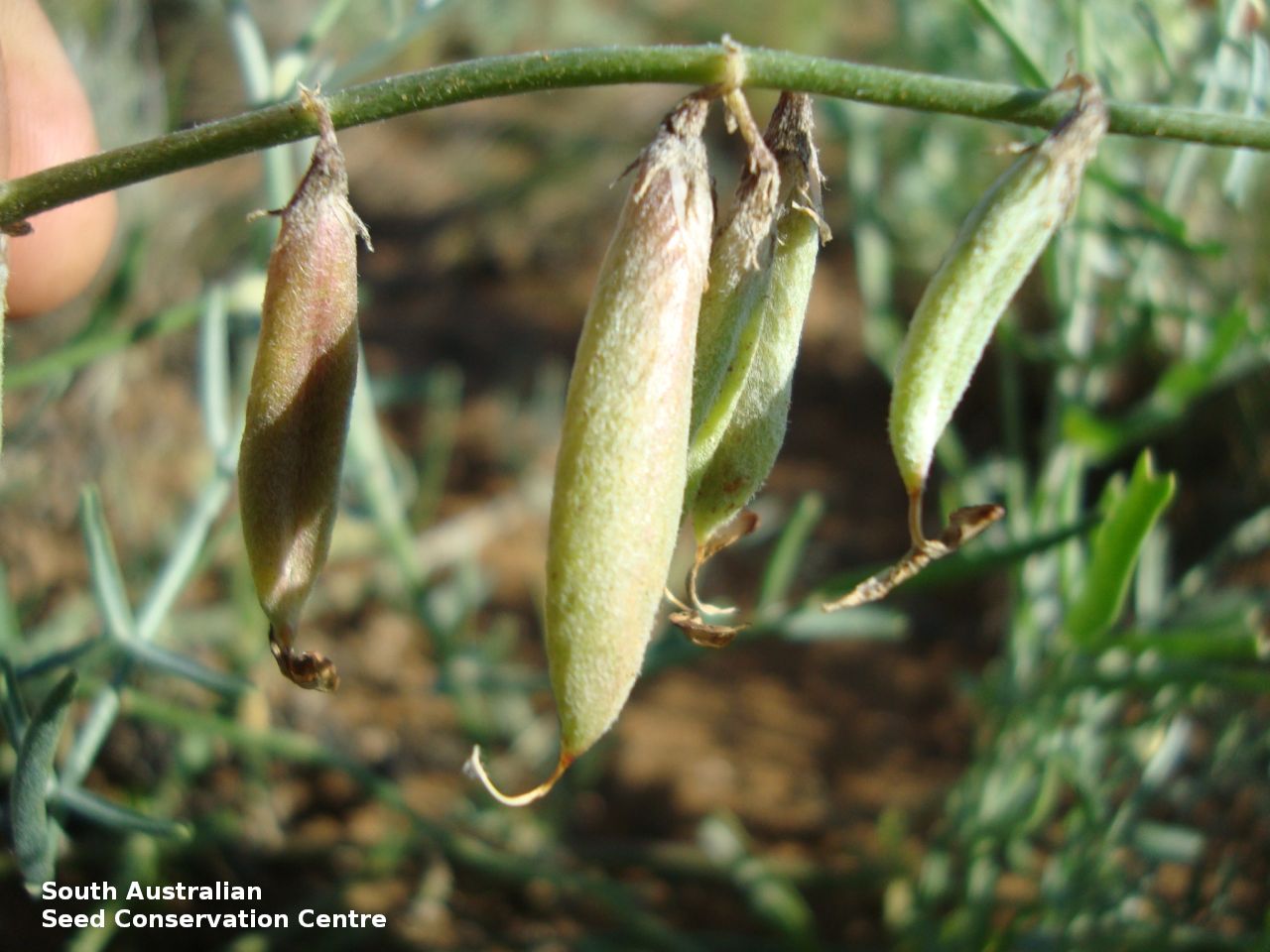

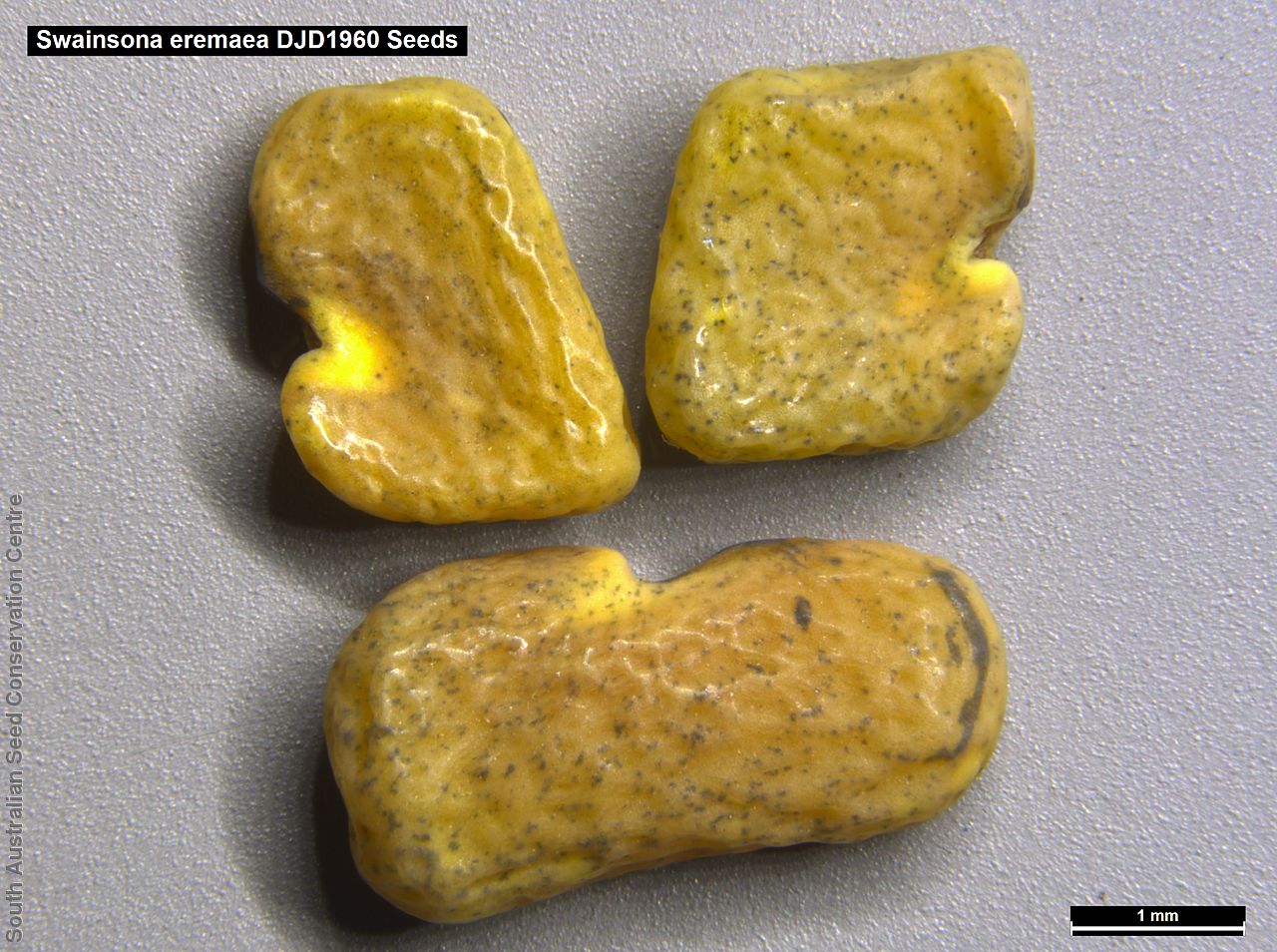
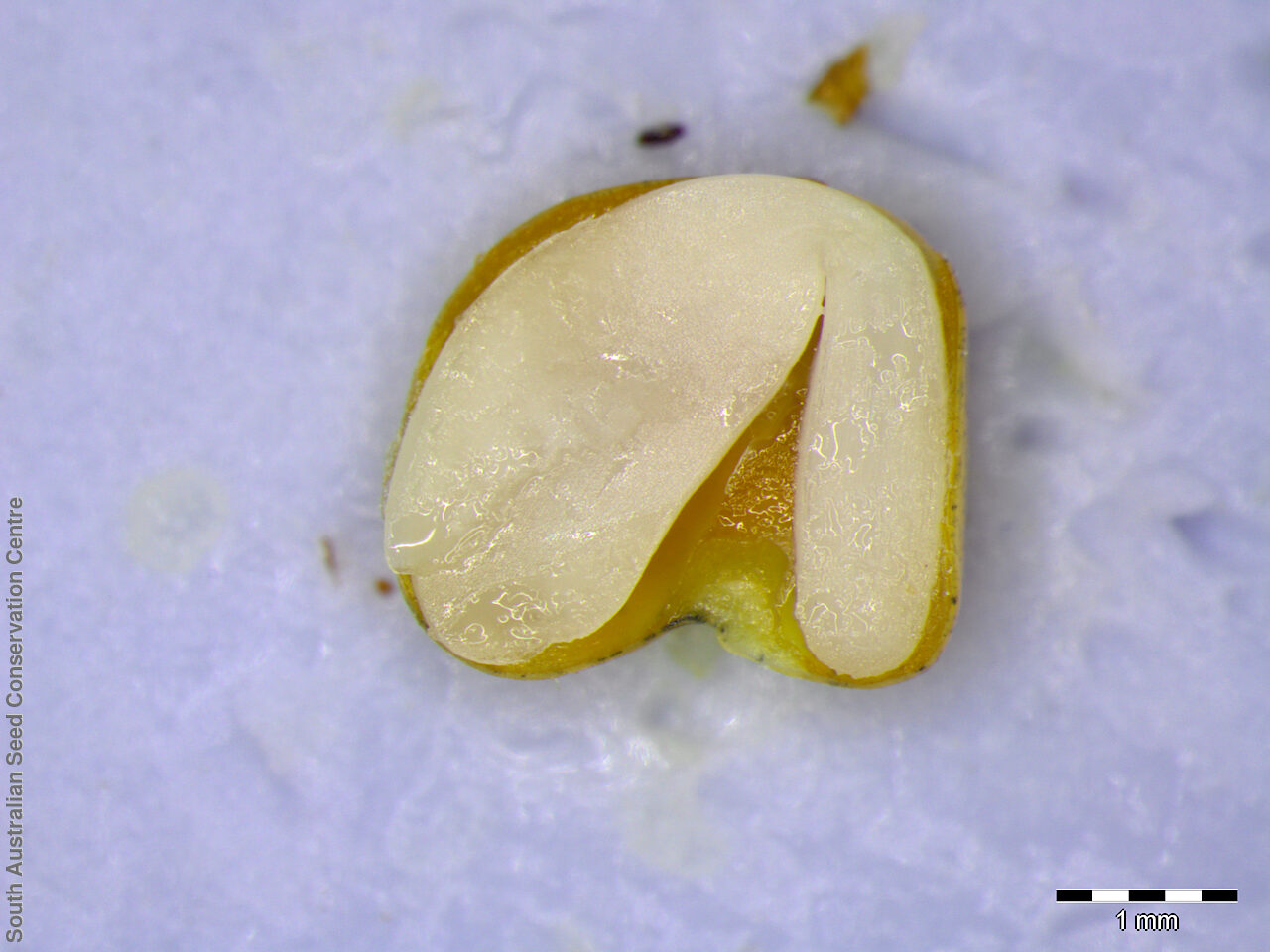


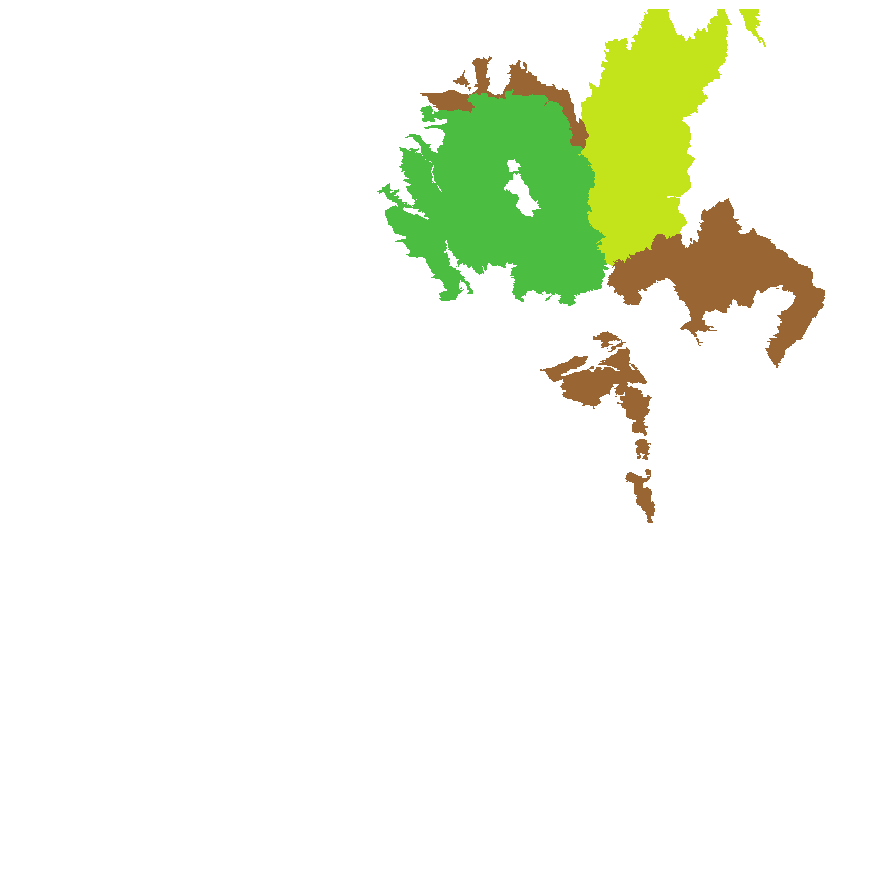
Etymology
Swainsona named after Isaac Swainson (1746-1812, an English scientist and horticulturalist who had a private botanic garden near London. Eremaea from the Greek 'eremites' meaning of the desert; referring to the preferred arid-land habitat of the species.
Distribution and status
Endemic to South Australia and found in sandy or stony soil on floodplain in north central region. Native. Rare in South Australia.
Herbarium regions: Lake Eyre, Gairdner-Torrens
NRM region: South Australian Arid Lands
AVH map: SA distribution map (external link)
Plant description
A low spreading herb to 30cm high with many hairy stems arising above the taproot. Leaves 2-9cm long with 5-11 blue-green and hairy leaflets. Flowers orange. Fruits are black stiff pod 10-15mm long covered with hairs. Seeds are mottled orange, semi-flat reniform seeds to 3mm long with a wrinkled surface. Seed embryo type is bent.
Seed collection and propagation
Collect seeds between October and November. Collect mature pods, those turning black and contain hard seeds. Mature pods can be found lying on the ground next to the plant. Place the pods in a tray and leave to dry for a week. When dried the pods can become hard and difficult to open. Use a rubber bung to rub the pods or break the pods open with your fingers to dislodge the seeds. Use a sieve to separate the unwanted material. Store the seeds with a desiccant such as dried silica beads or dry rice, in an air tight container in a cool and dry place. From one collection, the seed viability was high, at 90%. This species has physical dormancy that need to be overcome for the seed to germinate (e.g. nicking or softening the seed coat).
| Location | No. of seeds (weight grams) | Number of plants | Date collected | Collection number Collection location | Date stored | % Viability | Storage temperature |
|---|---|---|---|---|---|---|---|
| BGA MSB | 3,500 (11.45 g) 3,500 (11.45 g) | 50+ | 9-Oct-2010 | DJD1960 Lake Eyre | 1-Jan-2012 | 90% | -18°C |
Number of plants: This is the number of plants from which the seeds were collected.
Collection location: The Herbarium of South Australia's region name.
% Viability: Percentage of filled healthy seeds determined by a cut test or x-ray.